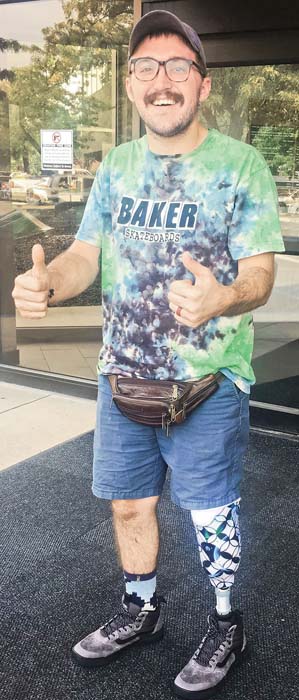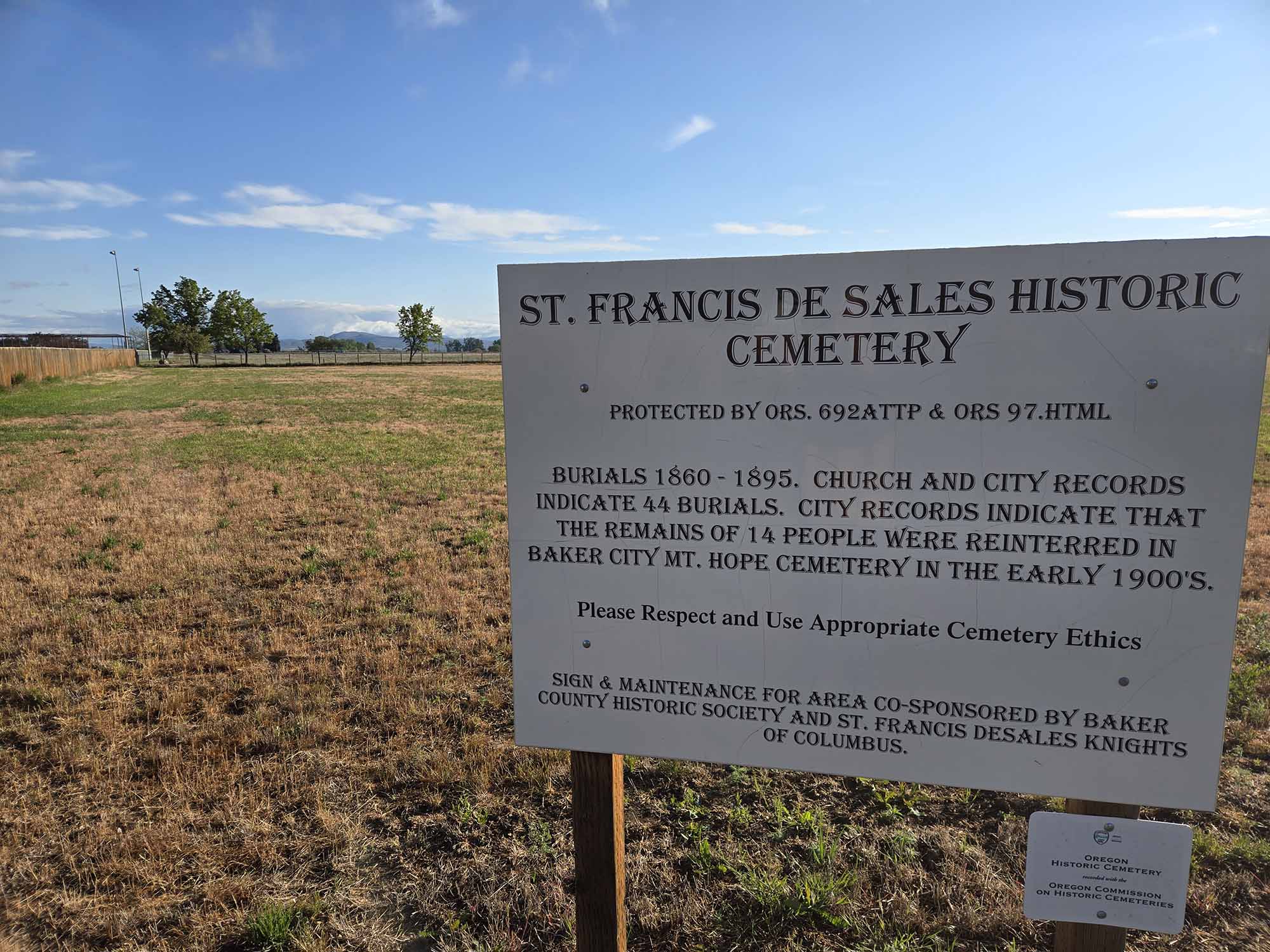The Art of Recovery
Published 7:30 am Thursday, December 6, 2018

- Submitted photoAndrew Gettle has hardly slowed down since recovering from his injuries.
Andrew Gettle is a man of action — first posing beside a wooden sculpture to show what the finished product will look like, then giving a critical eye to a grape-inspired creation as he rips off a piece and tosses it aside.
Trending
As he moves around his workshop, a smile spreads across his wife Lea’s face.
Nine months ago, doctors told her that Andrew wouldn’t make it through the night.
Yet here he is, a prosthetic leg barely affecting his gait, as he explains his artistic process.
Trending
Andrew, 28, was in a motorcycle accident on April 26 about 3 miles from Baker City on Highway 30.
He has no memory of that day. Instead, Lea tells the story of the phone call as she was cooking dinner, and the drive to Boise as Andrew was transported by air ambulance.
“The first night they told me he wasn’t going to make it. That was the first prognosis,” Lea said.
He was in a medically induced coma for 21 days. His injuries included a broken back, aspirated lungs, cracked elbows and broken legs.
His traumatic brain injury required three surgeries. To alleviate pressure from swelling, surgeons removed a piece of his skull and implanted it in his abdomen until the skull segment was reattached. Implanting the piece of skull in the abdomen can keep the piece sterile until it is reattached.
Although doctors tried to save his left leg for six weeks, the injuries were too severe. It was amputated below the knee.
His hospital stay stretched 65 days. He was released June 29, following 13 days in rehab.
“Every step was hard, but every step was a step forward,” Lea said.
Prior to the accident, Andrew created mixed-media sculptures using power tools. He also learned the bronze-making process while working at Blue Mountain Fine Art.
After the accident, power tools were off-limits. But he still had an itch to create.
“In the hospital he’d say ‘I can’t wait to get back to my shop,’ ” Lea said.
She offered him notebooks and colored pencils.
“That lasted all of one day,” Lea said. “ ‘I need to paint,’ he said.”
Recovery Continues At Home
Returning home presented new challenges. Without a prosthetic, Andrew used a wheelchair — but Lea had already witnessed him trying to walk in the hospital and worried he would try again.
“The psychologist suggested putting up ‘don’t walk’ signs,” Lea said.
Andrew promptly took up a paintbrush and the largest canvas he had to paint “Don’t Walk” against an abstract mix of bright colors.
Then he moved on to another canvas, and another.
“I’d be working on five or six paintings at a time,” he said. “It’s the only thing I was doing for six months. It was the perfect escape.”
Painting was not his first choice, but it occupied his hands and mind.
“It was the only thing I could do,” he said. “It’s so two-dimensional. That frustrates me.”
But he had a goal: Kate Reid, who owns Royal Artisan in Baker City, asked him to be the featured artist for December.
He’ll have nearly 40 paintings in the show, which opens during the First Friday art walk this Friday, Dec. 7. The show is titled “Therapy.”
“It tells an amazing story, I think,” Lea said. “It’s awesome to see them all on one wall. You can see the ebbs and flows of his recovery through his paintings.”
The pieces don’t have one particular style.
“There’s no trend,” he said. “I just tried different things with manipulating paint. I just imagine it and make it happen.”
After returning home, Andrew had occupational and physical therapy. After appointments, he had homework to do certain moves with his arms.
Bored with simple movements sitting in his wheelchair, he instead incorporated the exercises into his painting technique.
“We think that sped up his recovery,” Lea said.
Every day, he maneuvered his wheelchair across their gravel driveway to his shop. Instead of the power tools, Andrew worked in a smaller room outfitted with paint and brushes.
“Being in that damn wheelchair — it hindered the art,” he said.
But he filled canvas after canvas.
“Lots of Hobby Lobby trips in the wheelchair,” Lea said.
He received a prosthetic leg on Sept. 22. Although more mobile, he continued painting.
As he wrapped up his final paintings before the show opened, Andrew’s mind was clearly somewhere else — in a nearby room, where his sculptures await.
He’s been cleared to use power tools again after passing an eight-hour test that also allowed him to take a driving test.
He’s especially eyeing a life-like figure he created from wood scraps — the project he worked on the day of the accident so many months ago.
It is his version of a burning man. The final step in this piece of art is to burn it and then arrest the flames after it’s good and charred.
“I’m pretty excited to torch him,” Andrew said with a smile.









